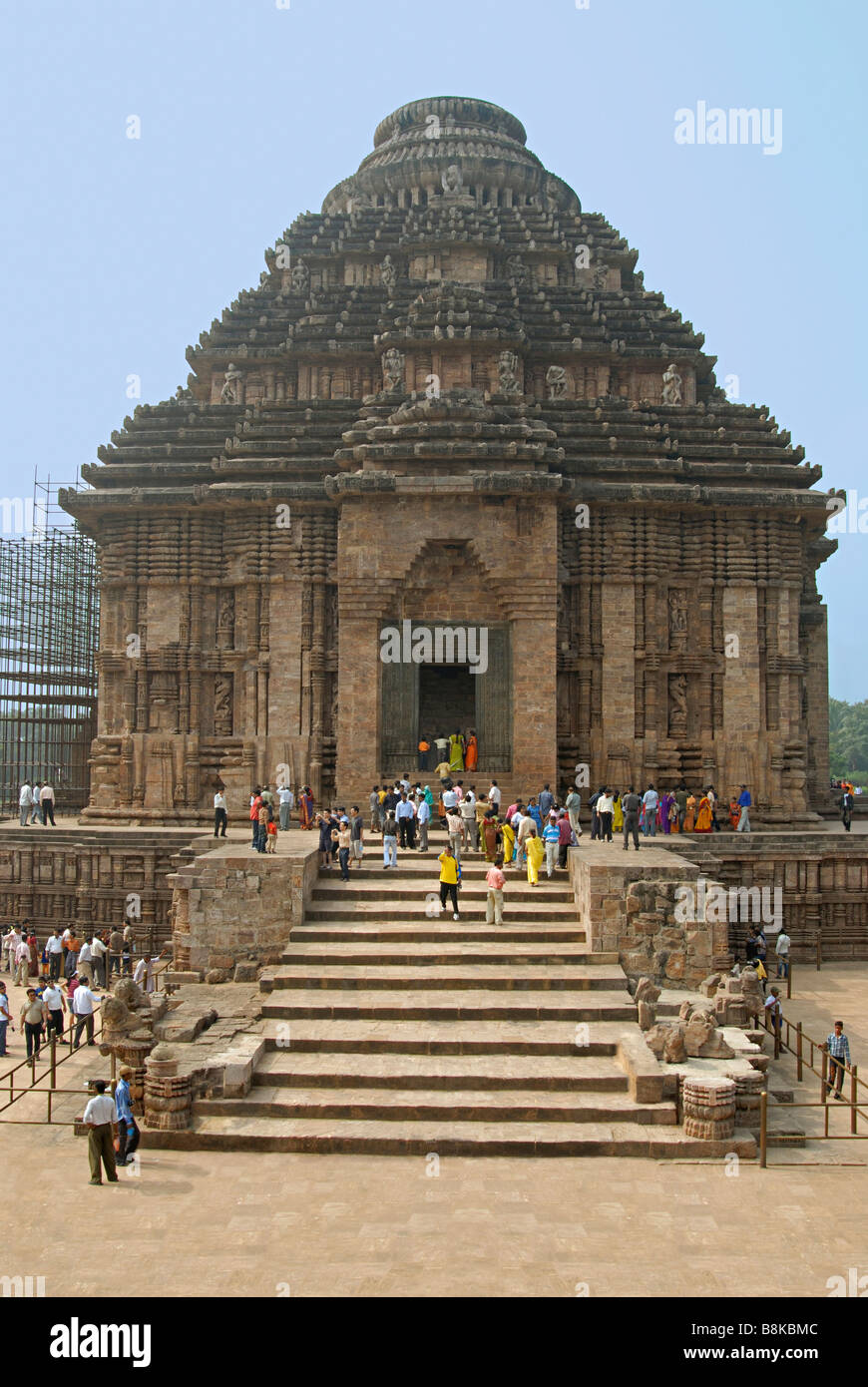Temple No.1, porch front side. Konark Sun Temple Orissa, India. UNESCO World Heritage Site

Image details
Contributor:
ephotocorp / Alamy Stock PhotoImage ID:
B8KBMCFile size:
49.3 MB (2 MB Compressed download)Releases:
Model - no | Property - noDo I need a release?Dimensions:
3396 x 5074 px | 28.8 x 43 cm | 11.3 x 16.9 inches | 300dpiDate taken:
2009Location:
Konark, Odisha, IndiaPhotographer:
Shreekant JadhavMore information:
Konark Sun Temple is a 13th-century Sun Temple (also known as the Black Pagoda), at Konark, in Orissa. It was built in red sandstone (Khandolite) and black granite by King Narasimhadeva I (1236-1264 CE) of the Eastern Ganga Dynasty. The temple is one of the most well renowned temples in India and is a World Heritage Site. The temple takes the form of the chariot of Surya (Arka), the sun god, and is heavily decorated with stone carving. The entire complex was designed in the form of a huge chariot drawn by seven spirited horses on twelve pairs of exquisitely decorated wheels. The Sun Temple, built in the thirteenth century, was conceived as a gigantic chariot of Sun God, with twelve pairs of exquisitely ornamented wheels pulled by seven pairs of horses. Majestic in conception, this temple is one of the most sublime monuments of India, famous as much for its imposing dimensions and faultless proportions as for the harmonious integration of architectural grandeur with plastic allegiance. Every inch of the temple is covered with sculpture of an unsurpassed beauty and grace, in tableaux and freestanding pieces ranging from the monumental to the miniature. The subject matter is fascinating. Thousands of images include deities, celestial and human musicians, dancers, lovers, and myriad scenes of courtly life, ranging from hunts and military battles to the pleasures of courtly relaxation. These are interspersed with birds, animals (close to two thousand charming and lively elephants march around the base of the main temple alone), mythological creatures, and a wealth of intricate botanical and geometrical decorative designs. The famous jewel-like quality of Orissan art is evident throughout, as is a very human perspective which makes the sculpture extremely accessible.